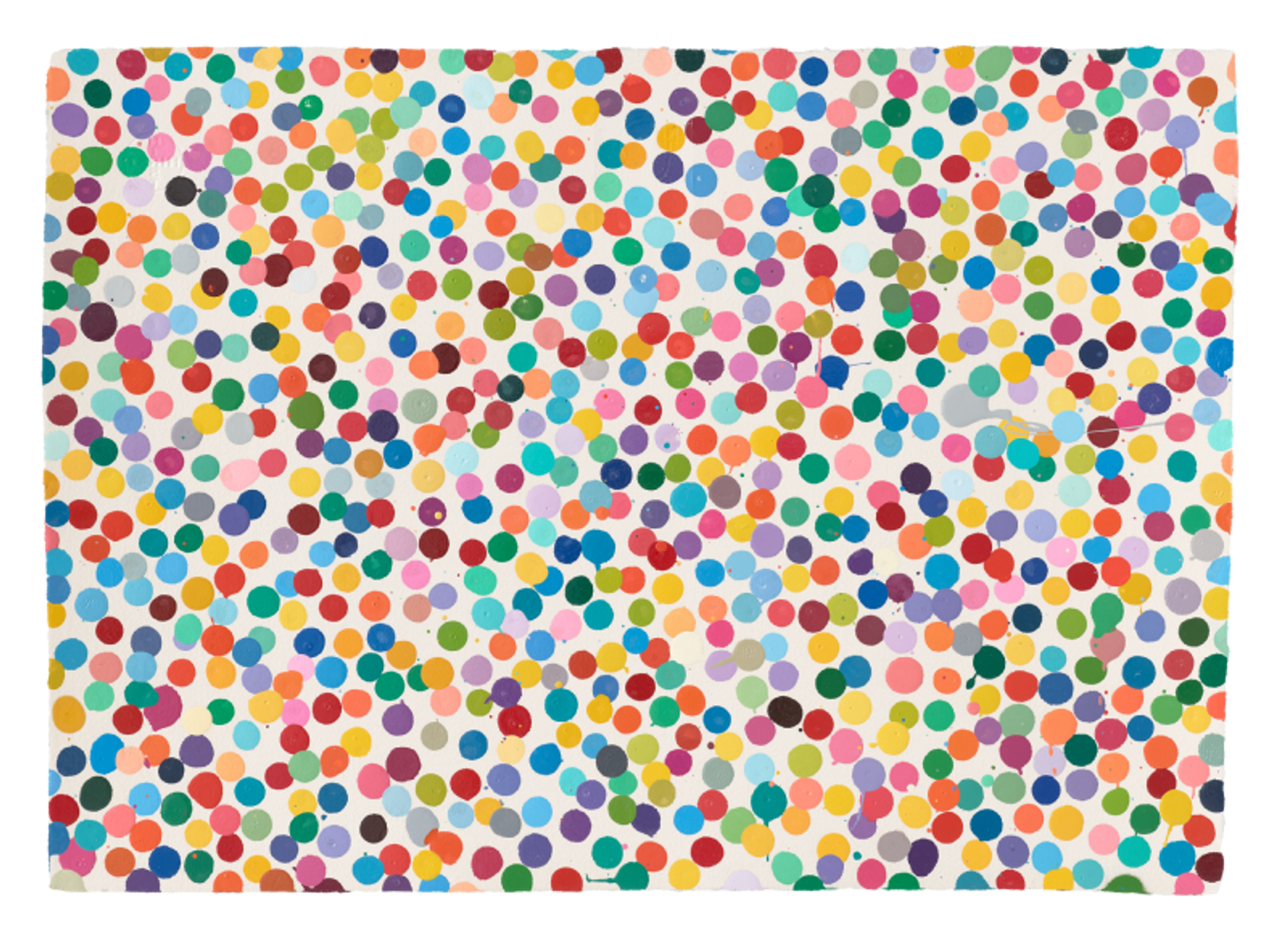 Diamond Dust Shoes (F. & S. II.253) © Andy Warhol 1980
Diamond Dust Shoes (F. & S. II.253) © Andy Warhol 1980
Interested in buying or selling
work?
Market Reports
While art has long been considered a passion asset, its viability as an investment vehicle continues to grow. In recent years, with global sales stabilising around $65 billion, collectors are increasingly viewing art as a form of alternative capital. This evolution has led to a sharp rise in art-based lending, as private banks, auction houses, and specialist lenders offer new ways to leverage a collection without selling it.
The nature of the strong bluechip art market has opened opportunities, allowing collectors to leverage their art as a form of collateral. As art is considered a liquid asset, banks, storage companies, private lenders, and even auction houses have found a fruitful sector in art lending.
According to the Art Basel & UBS Global Art Market Report, in 2023 global art sales reached $65.0 billion, and even after a mild downturn of around $57.5 billion in 2024, it remains above pre-pandemic levels. Notably, the UK market reached $10.4 billion in 2024, positioning it as the world’s second leading art market after the US.
Art financing is an increasingly attractive way to release valuable capital from your bluechip art collection. Here's the how and why, and t he options available when it comes to art lending:
What is Art Finance?
Art finance (also called art-backed lending) means using artworks as collateral to secure a loan. By borrowing against your collection, art financing lets you quickly realise liquidity without having to sell.
Art financing is no longer restricted to ultra-wealthy collectors seeking loans from private banks and auction houses. In recent years, a plethora of private specialised lending companies have made art financing more accessible for collectors at all levels - with a low minimum threshold and lower interest rates. Lenders typically advance on the order of ~50% of an artwork’s appraised value (so a £1 million painting could underwrite roughly a £500k loan). Unlike a bank loan, approval hinges on the art’s value and provenance rather than credit score or income. Many firms provide a full service: they arrange expert appraisals, handle shipping and storage, and draft the loan agreements. In short, art finance lets collectors raise money or fund acquisitions by leveraging their collection, while leaving the art in their hands.
Who is Art Finance For?
You might consider an art-backed loan if:
- You need quick liquidity without selling: If a lot of your finances are held in your private art collection, art financing allows you to borrow against the value of your collection. This is a favourable option for those who do not want to pursue the lengthy ordeal of selling, or commit to the permanent sale of their collection altogether.
- You want to fund new investments or purchases: Whether you want to invest in other artworks, property, fine wine, or something else, an art-backed loan is a viable way to raise funds for other alternative investments. With art financing, you can grow your collection without having to forfeit your existing works.
- Traditional credit isn’t available: This applies primarily to galleries and dealers, whose finances often don't meet the lending criteria of banks.
- You own artworks by bluechip artists with established markets: Bluechip art with a strong provenance and history of price appreciation - like Andy Warhol - traditionally pose a lower risk and can be borrowed against at many points in the economic cycle.
- You expect your art to appreciate: During times of economic uncertainty, art financing can be a convenient option to leverage your art without selling up completely. Lenders might choose an art-backed loan to release capital while waiting for the best time to sell.
- You have specific obligations (taxes, estate costs, etc.): Art loans are also used for estate planning or trust needs. For instance, Athena Art Finance explicitly advertises loans to support trust beneficiaries and meet estate taxes or philanthropic obligations. In these cases, the loan provides liquidity for taxes or grants while the family retains ownership of the assets.
Types of Art Lending Solutions
Your bluechip art collection can be a dynamic financial tool. Here are some of the types of art lending solutions you might consider:
- Acquisition Loans: If a dealer or gallery purchases more artworks but does not have the immediate capital to do so, many art lending companies offer a quick turnaround to receive capital quickly while receiving liquidity from assets. Likewise, if a collector is interested in guaranteeing a lot in an upcoming auction, an art loan can provide immediate capital to acquire a new work.
- Sale & Consignment Advances: If a collector is interested in works available in an upcoming auction, but does not have funds at hand, lending allows collectors to leverage their art collection as collateral. This is a viable alternative to the unfavourable option of selling altogether.
- Existing Loan Refinance: If a collector wants to refinance existing loans for better returns, art lending can be a good opportunity. After the collector repays their loan, they can sell their art collection that has significantly increased in value over time.
- Inventory Loans (for Dealers/Galleries): Financing for art businesses. Dealers and galleries can borrow against their inventory of artworks. The artworks themselves are the collateral, so businesses can turn unsold stock into working capital. This helps art businesses manage cashflow without liquidating their collection.
The Benefits of Art Lending
By using your art collection as a form of collateral, you afford yourself the opportunity to grow a valuable collection without selling any existing pieces. As the value of art is expected to increase over time, art financing can be a lucrative way to release valuable capital and further other alternative investments. More and more specialist lenders and banks are making it easier to leverage art to unlock liquidity quickly, and is attractive because of the ability to drive business across multiple divisions of the company sector.
For those with a strong bluechip art collection, art financing allows you to make the most of your investments as they continue to grow in value. If you're not prepared to commit to a full-time sale, art-backed loans are an opportunity to extend your capital while you make other investments, or wait for the right time to sell.
Who Provides Art Lending Services?
Once you decide to finance your art collection, there are various avenues to explore. Here are some of the key players in art lending:
- Auction houses: Major auction houses have their own finance arms. Christie’s Art Finance offers bespoke loans starting at about $1 million secured by fine art or luxury items. Sotheby’s Financial Services similarly lends against collections; it reportedly has a loan portfolio around $1 billion (which grew ~50% from 2021–22). These in-house art-loan desks combine art expertise with lending, arranging fast loans for top clients (e.g. bidding advances or collateral loans against future consignments).
- Private banks: Many private banks and wealth divisions lend to art collectors. Names include JPMorgan Chase, Citibank, UBS and Bank of America, among others. These lenders work mostly with high-net-worth clients and offer loans or lines of credit secured by artworks. For instance, Bank of America’s art-credit team has seen ~10% annual growth in its art-backed lending. (Some banks require the art to be professionally stored or insured, but the client retains title.)
- Specialist Lenders and Advisories: A growing sector of finance firms focuses exclusively on art and luxury assets. In the UK, Fine Art Group (London) provides bespoke loans from $1M to $200M at ~50% Loan-To-Value ratio (LTV). Gurr Johns Capital (London/New York) arranges loans against consigned items or whole collections. In the US, Athena Art Finance targets ultra-blue-chip collections (loans typically start ~$2M at 50% LTV), while Emigrant Bank Fine Art offers tailored loans ranging ~$2M–$100M with terms up to 15 years. Newer UK firms, like SUROS Capital, have also lent heavily.
- Art storage companies: More recently, art storage companies have begun to offer their clients loans backed by the artworks held in their facilities. UOVO - a state-of-the-art storage company, have extended their operations to art financing - a viable opportunity for clients who already have their works in storage.
There are a plethora of options available to bluechip art collectors when it comes to art financing. While many private banks and auction houses serve primarily Ultra High Net Worth collectors, certain lenders are offering opportunities to collectors who want to make smaller investments. Art financing is becoming more accessible, giving collectors the opportunity to invest and grow a strong bluechip collection.








